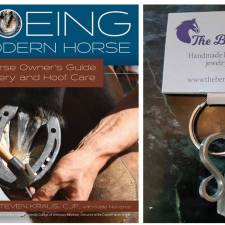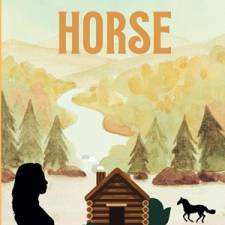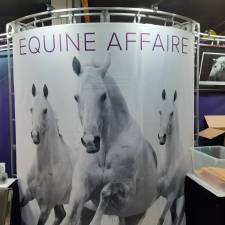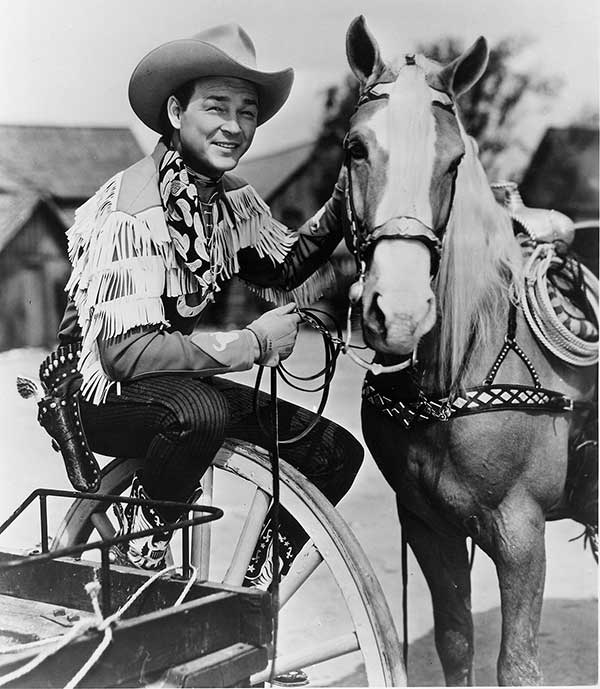
An excerpt from Happy Trails: A Pictorial Celebration of the Life and Times of Roy Rogers and Dale Evans by Howard Kazanjian and Chris Enss.
Early in Roy Rogers’ career as a Western star, Republic Pictures created a fictitious promotional campaign to introduce him to the public. Press agents decided it would add to Roy’s appeal if they told potential moviegoers that he was a real cowboy born in Cody, Wyoming. Citizens in Wyoming and Ohio wrote to the studio protesting the false reports. Within a few days an accurate biography of Rogers was released.
The studio sent Roy on press junkets after each of his films was released. According to Republic executives, Roy came across much better in person than on the screen. They felt his eyes were more expressive and his shy smile more appealing. Fans agreed, and his personal-appearance tours proved to be profitable ventures.
Roy was grateful for his success and went out of his way to show his gratitude to his family and friends. With a portion of the money he earned, he purchased his parents a home in California and got the Sons of the Pioneers a contract working with him in all his Westerns. He felt a deep sense of satisfaction to be doing something for those he loved and those who had befriended him in the lean years.
While actors Roy Rogers, Gabby Hayes, and Dale Evans and members of the crew were waiting to shoot a scene in Helldorado, Gabby entertained everyone with humorous stories of his vaudeville days. Dale was listening to the tale while sitting atop her horse. When the story ended she let out a loud laugh and in the process dug her heels into her ride’s side. The horse took off like a shot, and Dale tried desperately to regain control of the spooked animal.
Roy quickly recognized that Dale was in trouble. Her horse was at full gallop and despite her screams, the steed would not stop. Roy quickly jumped on Trigger and took off after Dale. Once Trigger caught up to Dale, Roy reached out and scooped his costar off the frightened horse.
No one associated with a Roy Rogers movie was surprised at the actor’s heroics. Roy was a great deal like the characters he played on the screen: daring, helpful, and as patient as Job. In a letter home to her parents, Dale explained the daring rescue. She wrote that Roy was a courageous family man who talked constantly about his wife and two children. She believed that she had never met a more giving person in her life.
Throughout the 1940s the careers of Roy Rogers and Dale Evans rode the crest of an incredible wave. Their popularity spanned across the ocean into Europe, and fans who wanted their heroes with them at all times could purchase toothbrushes, hats, dishes, and bed sheets with the pair’s names and likenesses on every item. By the late 1940s Roy Rogers and Dale Evans were second only to Walt Disney in commercial endorsements. They played to record-breaking crowds at rodeos and state fairs.
Roy and Dale were together most of their waking hours. They were good friends who confided in each other and discussed the difficulties of being single parents. They depended on one another and respected each other’s talents. Roy was impressed with Dale’s on-screen take-charge personality. Dale had a quick, smart-aleck delivery, and she wasn’t afraid to get into a fight or two.
Roy’s and Dale’s mutual admiration for and attraction to one another grew. It seemed a foregone conclusion that these two Western icons would ride off into the sunset together in real life.
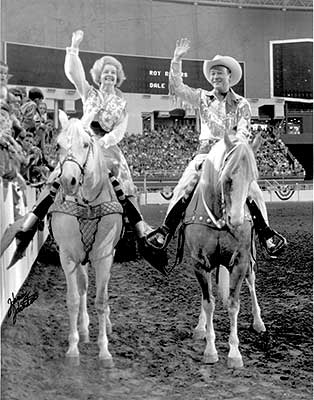
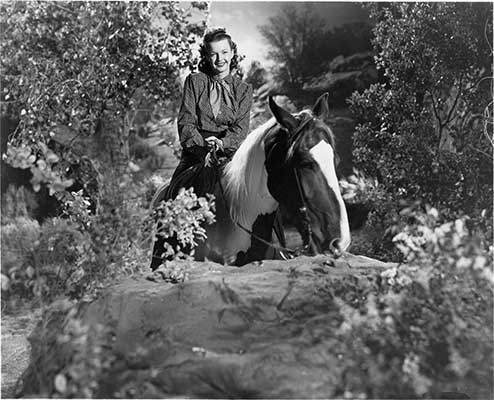
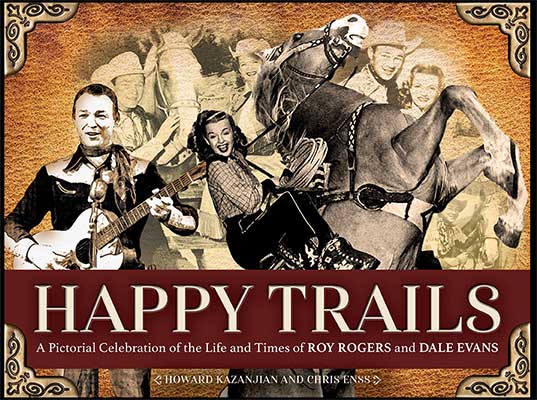
Editor's Note: We actually attended the preview of the Roy Roger and Dale Evans Museum collection auction at Christie's in 2010. It was amazing to see Roy's horse Trigger who sold for $266,500. The results are HERE
This excerpt adapted from Happy Trails: A Pictorial Celebration of the Life and Times of Roy Rogers and Dale Evans by Howard Kazanjian and Chris Enss is reprinted with permission from Trafalgar Square Books (www.HorseandRiderBooks.com).
You can find lots of interesting reading in our sections on Recreation & Lifestyle and Books.









